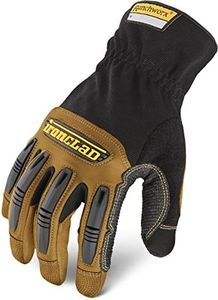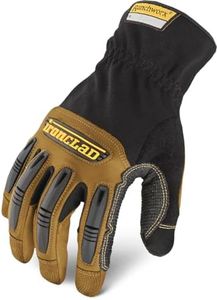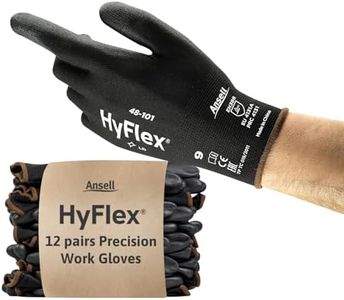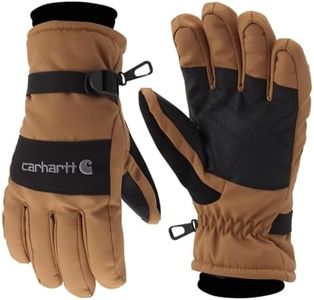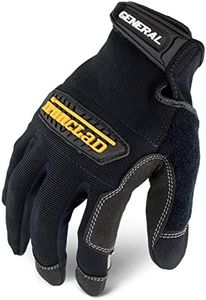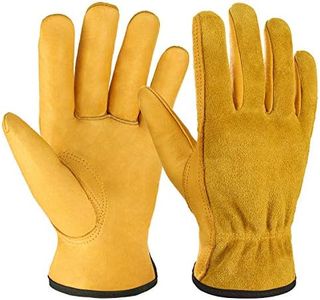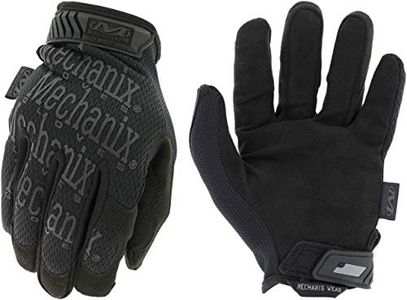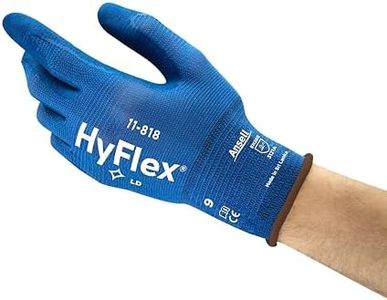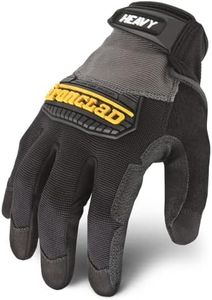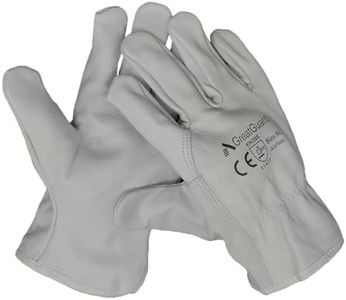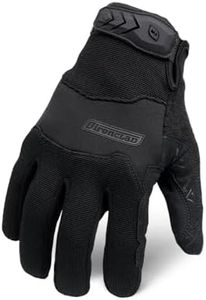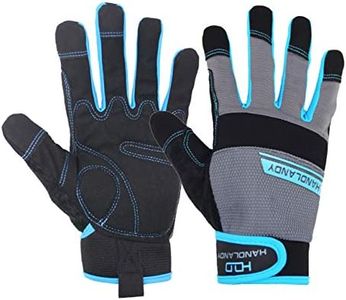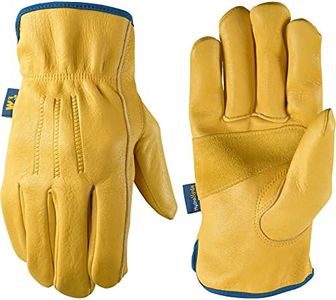We Use CookiesWe use cookies to enhance the security, performance,
functionality and for analytical and promotional activities. By continuing to browse this site you
are agreeing to our privacy policy
10 Best Mens Work Gloves
From leading brands and best sellers available on the web.By clicking on a link to a third party's website, log data is shared with that third party.
Buying Guide for the Best Mens Work Gloves
Choosing the right men's work gloves is essential for comfort, safety, and productivity. There are many different types of work gloves, each designed for particular tasks and environments. Understanding the key features will help you narrow down what suits your daily activities, so you don't end up with gloves that are too light for heavy tasks or too bulky for delicate work. Think first about what you'll be doing most often while wearing the gloves—are you working with tools, handling rough materials, or exposed to extreme temperatures? This will guide you through the options and help you focus on the specs that truly matter for your needs.MaterialThe material of a work glove determines its durability, flexibility, and level of protection. Common materials include leather, synthetic fabrics, rubber, and cotton. Leather gloves offer excellent durability and abrasion resistance, making them great for heavy-duty work, while synthetics might be lighter and more flexible, which is useful for detailed tasks. Cotton gloves provide breathability for light work, and rubber gloves are best for tasks involving moisture or chemicals. Think about your work environment: for rough construction, leather is a solid choice; for gardening or light warehouse tasks, cotton or synthetic might be enough. Choosing the right material means balancing comfort and safety for your daily tasks.
GripGrip refers to how well the gloves help you hold onto objects or tools. This comes from the glove's palms and fingertip coating, such as rubberized or textured surfaces. Excellent grip is important for wet or oily environments, or if you're handling small parts. Some gloves have patterns or special coatings to improve grip. For users handling tools or parts where slipping is a concern, opt for gloves labeled as non-slip or with grip-enhancing features. If your tasks are more about light protection and less about holding onto things, a simple uncoated glove may be fine.
Fit and SizeThe right fit ensures your gloves provide protection without hindering your hand movement. Gloves come in various sizes, often ranging from small to extra-large. A glove that's too tight can restrict movement and cause discomfort, while one that's too loose may slip off or reduce your control over tasks. Most brands offer size charts—for best results, measure your hand and compare with these charts. Think about the type of work you do: those who require dexterity (like assembly or wiring) should pick a snugger fit, whereas heavy lifting or material handling may allow for a slightly roomier glove.
Cut and Abrasion ResistanceThis spec refers to how well gloves can protect your hands from cuts, scrapes, and punctures. Different activities pose different levels of risk—handling sharp objects or rough materials requires high cut and abrasion resistance. Gloves often indicate this with safety ratings. For tasks like construction, metalwork, or landscaping, choose gloves with reinforced palms or materials designed to withstand sharp edges. For lighter chores, lower resistance is acceptable. Always assess the hazards of your daily tasks to pick the right level of protection.
Water and Chemical ResistanceSome gloves are designed to provide a barrier against water or chemicals, either through coatings or the material itself. This is important for jobs where your hands might get wet or come into contact with hazardous substances. Think about whether your tasks expose you to liquids, oils, or cleaning chemicals—go for gloves specifically marked as waterproof or chemical-resistant in these cases. If your work is dry and clean, you can forego this feature for better breathability and comfort.
Thermal ProtectionThermal protection refers to how well the gloves insulate your hands from heat or cold. Insulated gloves are needed for winter outdoor work or handling hot objects, while ventilated gloves are best for warm environments. Reflect on whether you'll be using the gloves in cold storage, winter construction, or near hot surfaces, and select accordingly. If your environment is temperate and you don't deal with extreme temperatures, this feature may not be essential.

